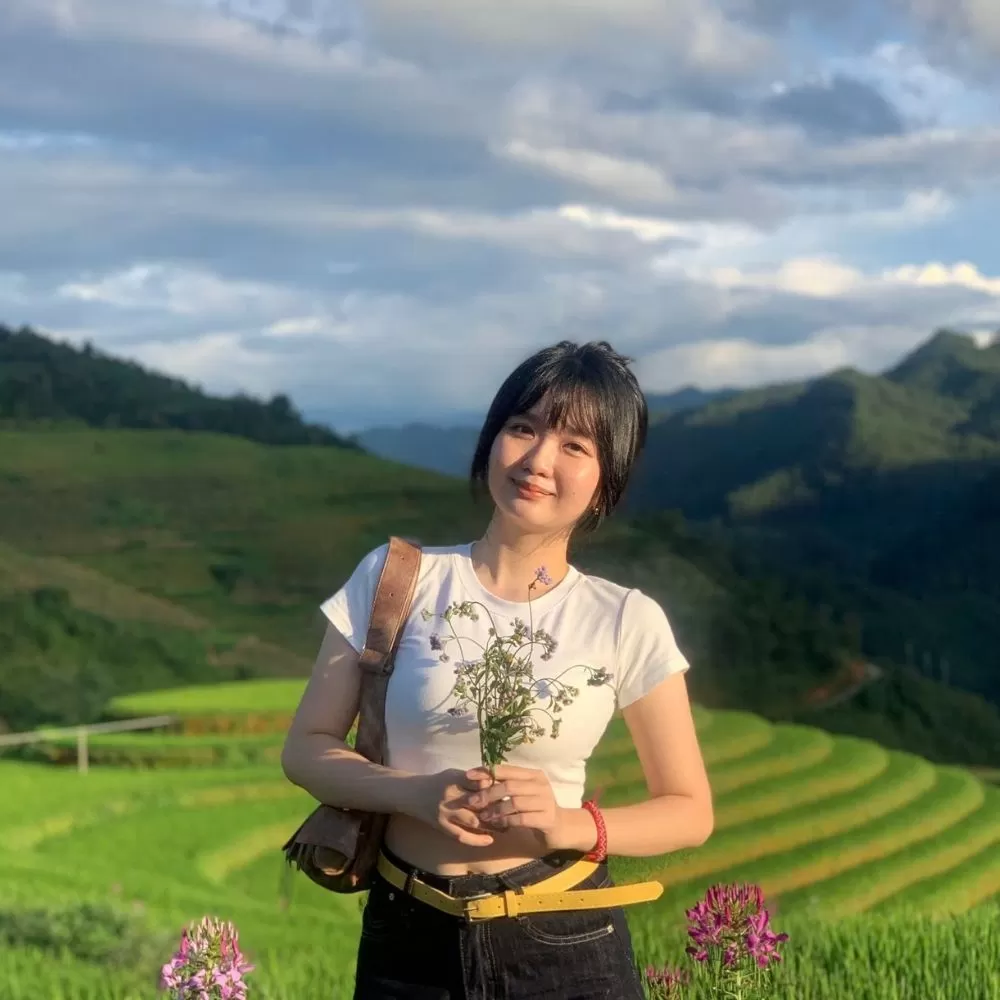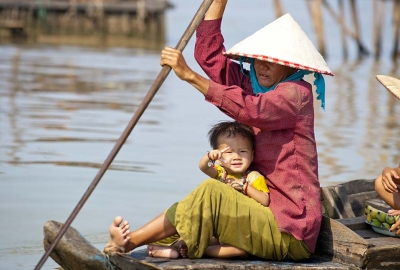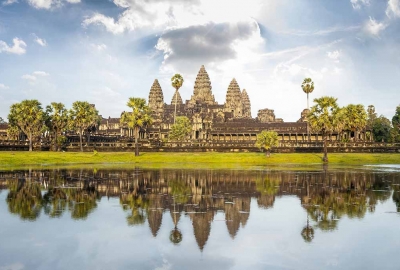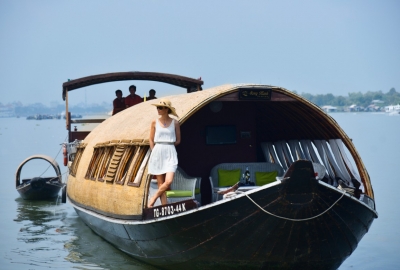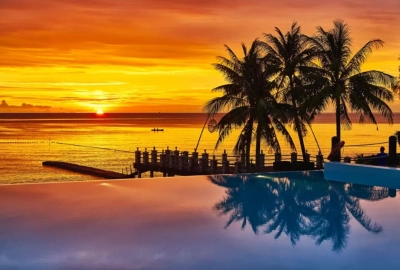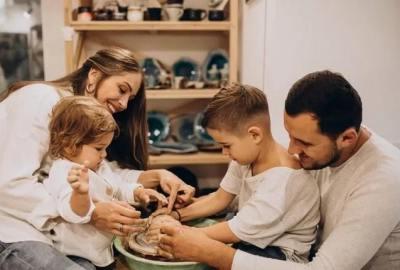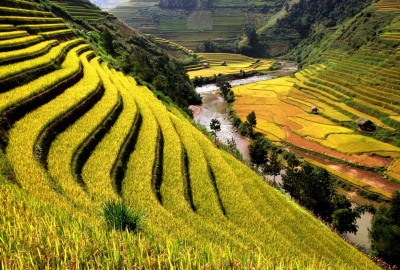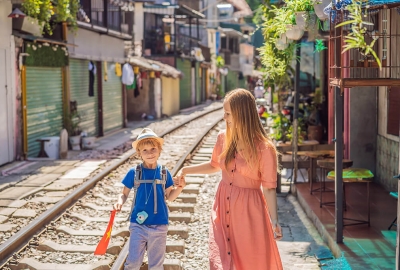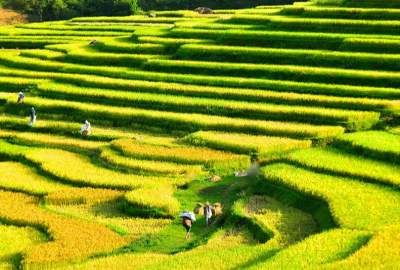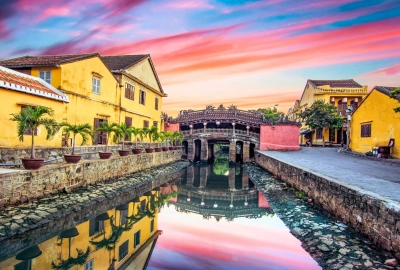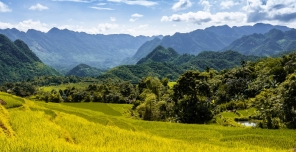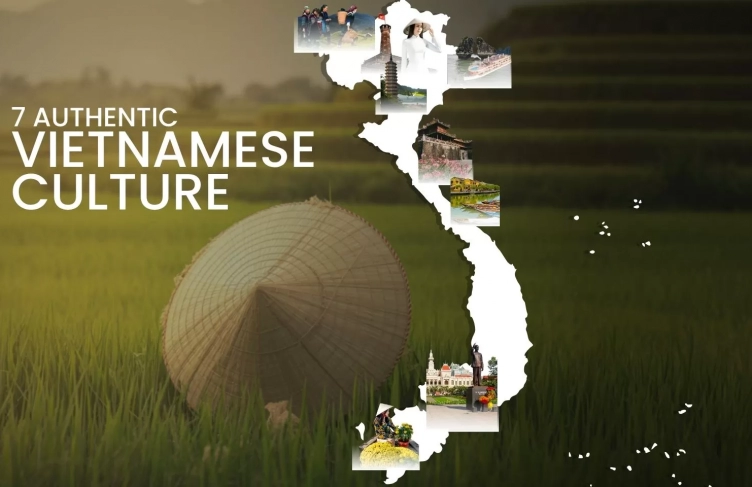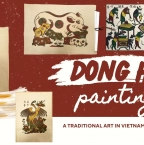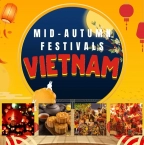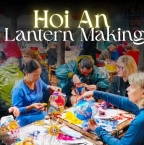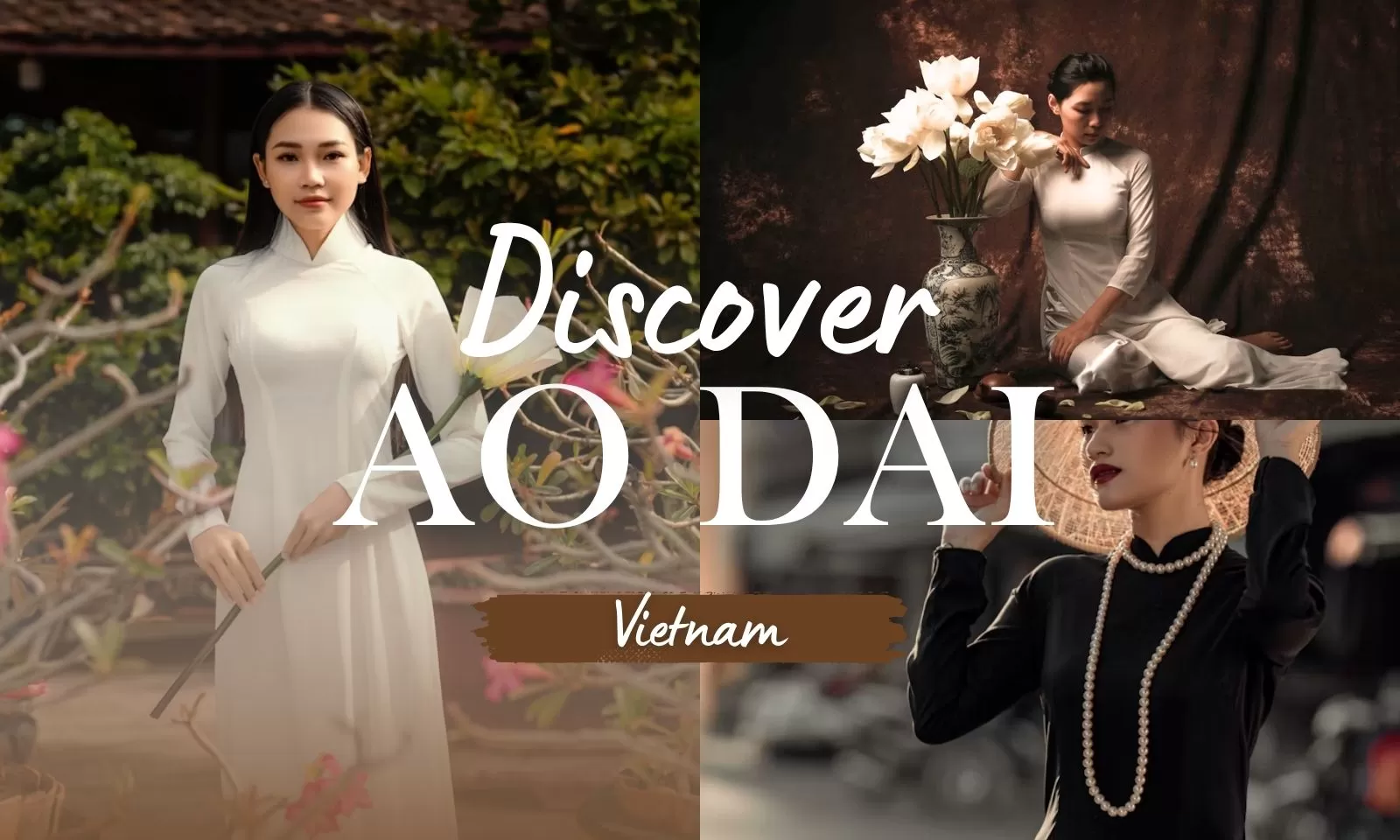
Discover Ao dai: Vietnam's traditional costume
Ao Dai Vietnam represents the elegance and grace of Vietnamese culture. This traditional costume captures the spirit of a nation through its timeless design and cultural significance. In this blog, we will explore the rich history, cultural significance and modern interpretations of the Ao Dai.

Ao Dai Vietnam is more than just a piece of clothing—it is a symbol of national pride, elegance, and cultural heritage. Flowing gracefully with every movement, the Ao Dai reflects the beauty and resilience of Vietnamese women through centuries of change. This traditional costume, often seen in ceremonies, festivals, and everyday life, continues to evolve while preserving its timeless charm. Explore the captivating story behind Ao Dai Vietnam and learn how it has become an iconic representation of the Vietnamese spirit.
Let Hanoi Voyages guide you through the history, meaning and modern influence of this cherished garment on your journey to discover Vietnam’s vibrant traditions.
Table of Contents
- Ao Dai Vietnam: A symbol of elegance and tradition
- The origins and history of Ao Dai
- Symbolism and cultural significance of Ao Dai
- Ao Dai through the ages: Traditional and modern designs
- Ao Dai Vietnam: The beauty of fabric, color and decoration
- When and where the Ao Dai is worn today
- Where to get a tailor-made Ao Dai in Vietnam
Ao Dai Vietnam: A symbol of elegance and tradition
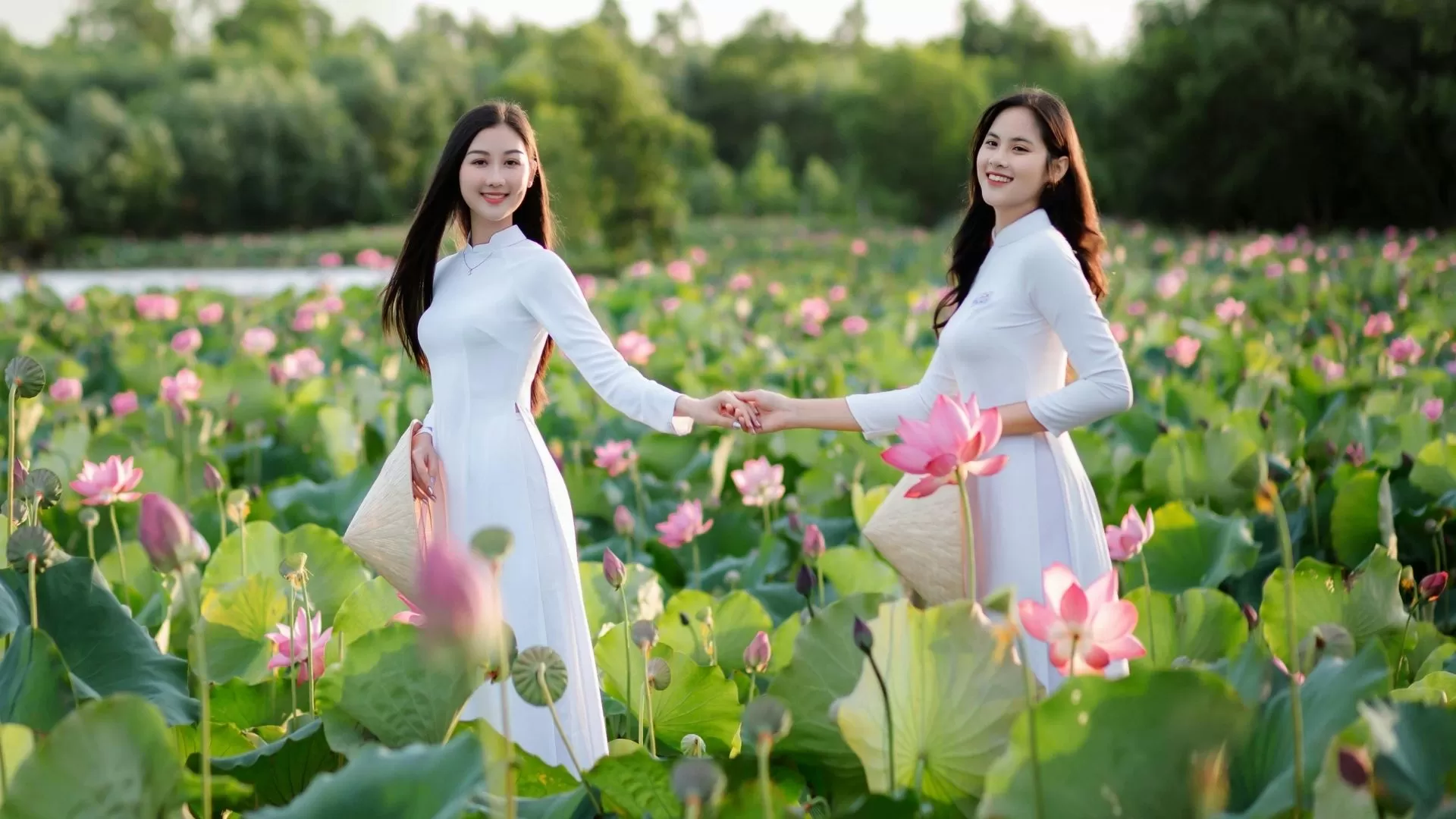
The Ao Dai (Áo dài) is the most iconic national outfit in Vietnam, a symbol of grace and elegance that transcends generations. The name "Ao Dai" translates literally to "long shirt," referring to the ankle-length tunic worn over loose-fitting trousers. Traditionally made from silk or other soft fabrics, the Ao Dai is tailored to hug the curves of the body while maintaining modesty through its high neckline and long sleeves.
What makes the Ao Dai special is its ability to combine traditional beauty with modern elegance. It’s commonly seen in schools, weddings, cultural festivals, and even modern fashion shows. Despite its simplicity, the Ao Dai speaks volumes about Vietnamese cultural values—respect, humility, and harmony. Often paired with the iconic conical hat (nón lá), the Ao Dai becomes a complete representation of Vietnamese femininity and cultural identity.
The origins and history of Ao Dai
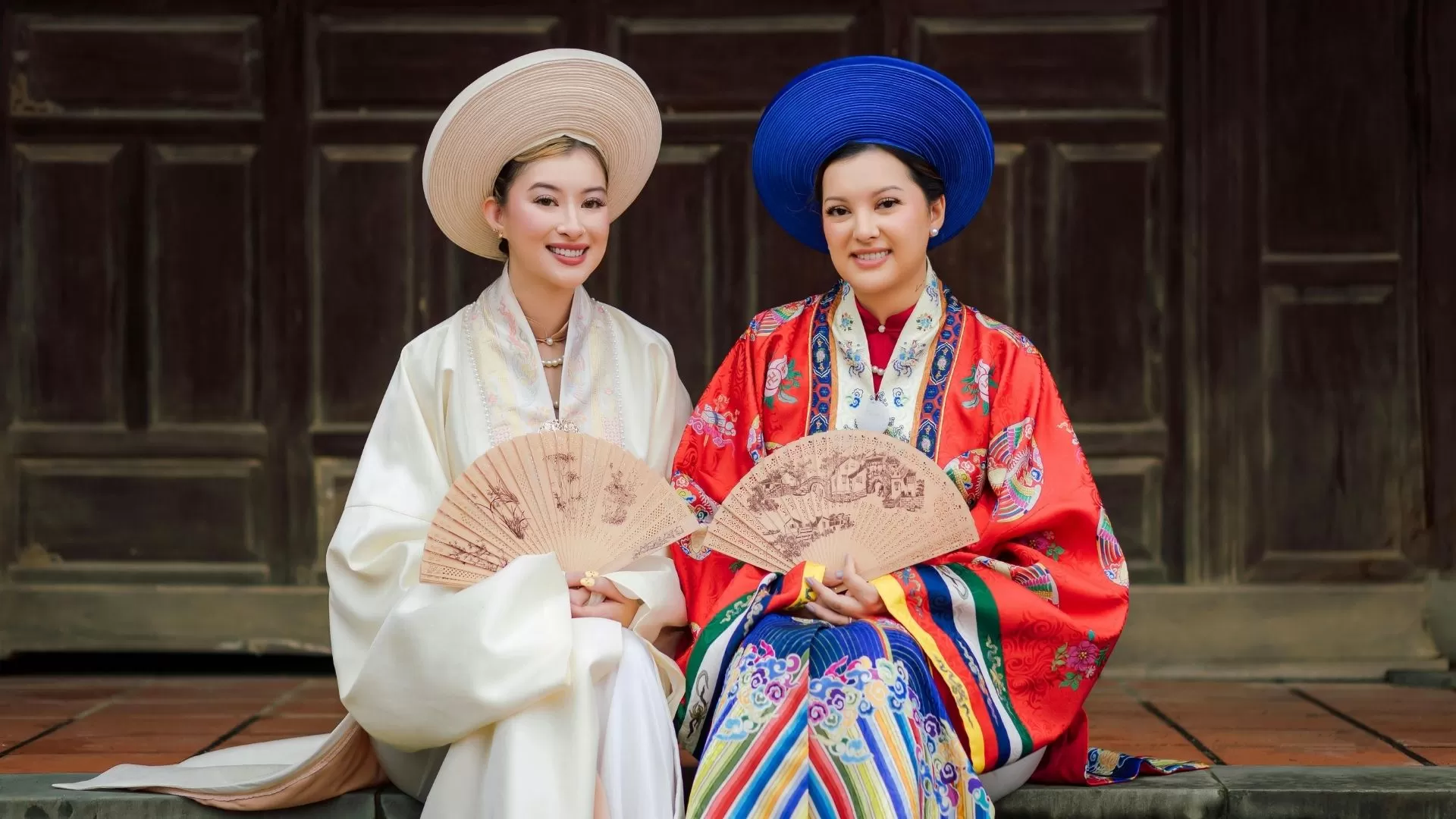
The Ao Dai has a fascinating history rooted in both native Vietnamese culture and external influences. Its earliest ancestor dates back to the 18th century when Lord Nguyen Phuc Khoat of Hue decreed that court women should wear a long tunic over pants, distinguishing them from Chinese-style dresses.
In the early 20th century, the Ao Dai underwent a French-inspired transformation by artist Cat Tuong (also known as Le Mur), who introduced Western tailoring elements such as a tighter fit, curved waistlines, and elegant contours. This version gained popularity in urban centers like Hanoi and Saigon.
By the 1950s and 60s, the Ao Dai reached its peak as a national symbol, particularly in the South. During wartime, it fell into disuse but experienced a strong revival in the 1990s, thanks to cultural pride and global fashion interest. Today, it continues to represent the soul of Vietnam, cherished by locals and admired by international visitors.
Symbolism and cultural significance of Ao Dai
Beyond its beauty, the Ao Dai Vietnam is rich with cultural meaning:
Femininity and elegance: The Ao Dai enhances the natural beauty of the wearer, symbolizing Vietnamese ideals of modesty and charm.
Purity and youth: White Ao Dai are worn by schoolgirls, signifying innocence and discipline.
Heritage and unity: Wearing the Ao Dai during national celebrations and weddings reflects a deep respect for tradition and identity.
Spiritual and ceremonial importance: The Ao Dai is often worn during religious festivals, Tet holidays, and ancestral rituals.
In all its forms, the Ao Dai represents a connection to Vietnamese roots, both spiritual and societal.
Ao Dai through the ages: Traditional and modern designs
There are two main types of Ao Dai: traditional and modern.
Traditional Ao Dai
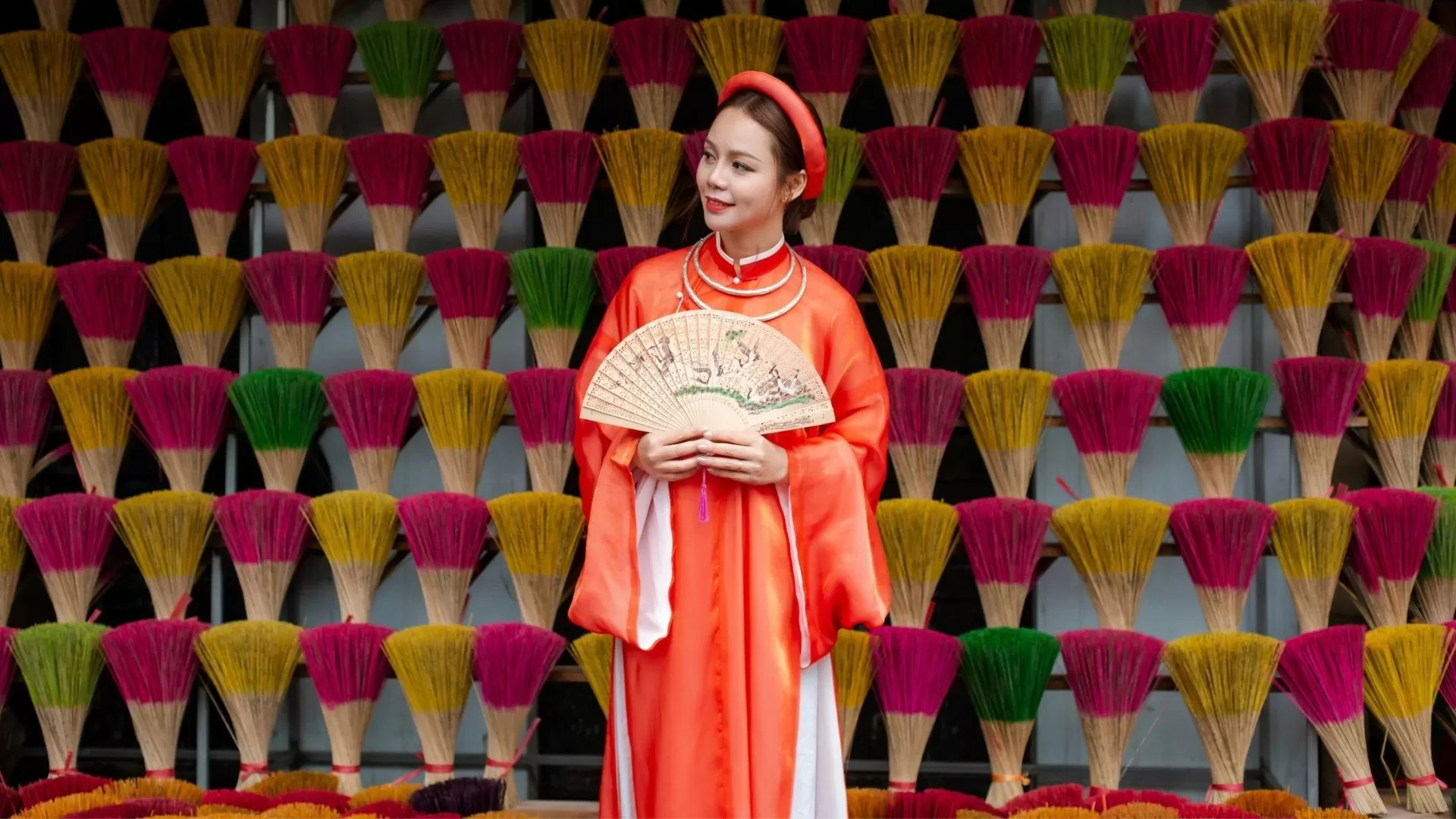
The traditional Ao Dai typically features a high mandarin collar and long sleeves, made from solid-colored silk or brocade, and is worn during weddings, Tet, and religious events. These traditional garments are often decorated with hand embroidery, showcasing floral and cultural motifs.
Modern Ao Dai
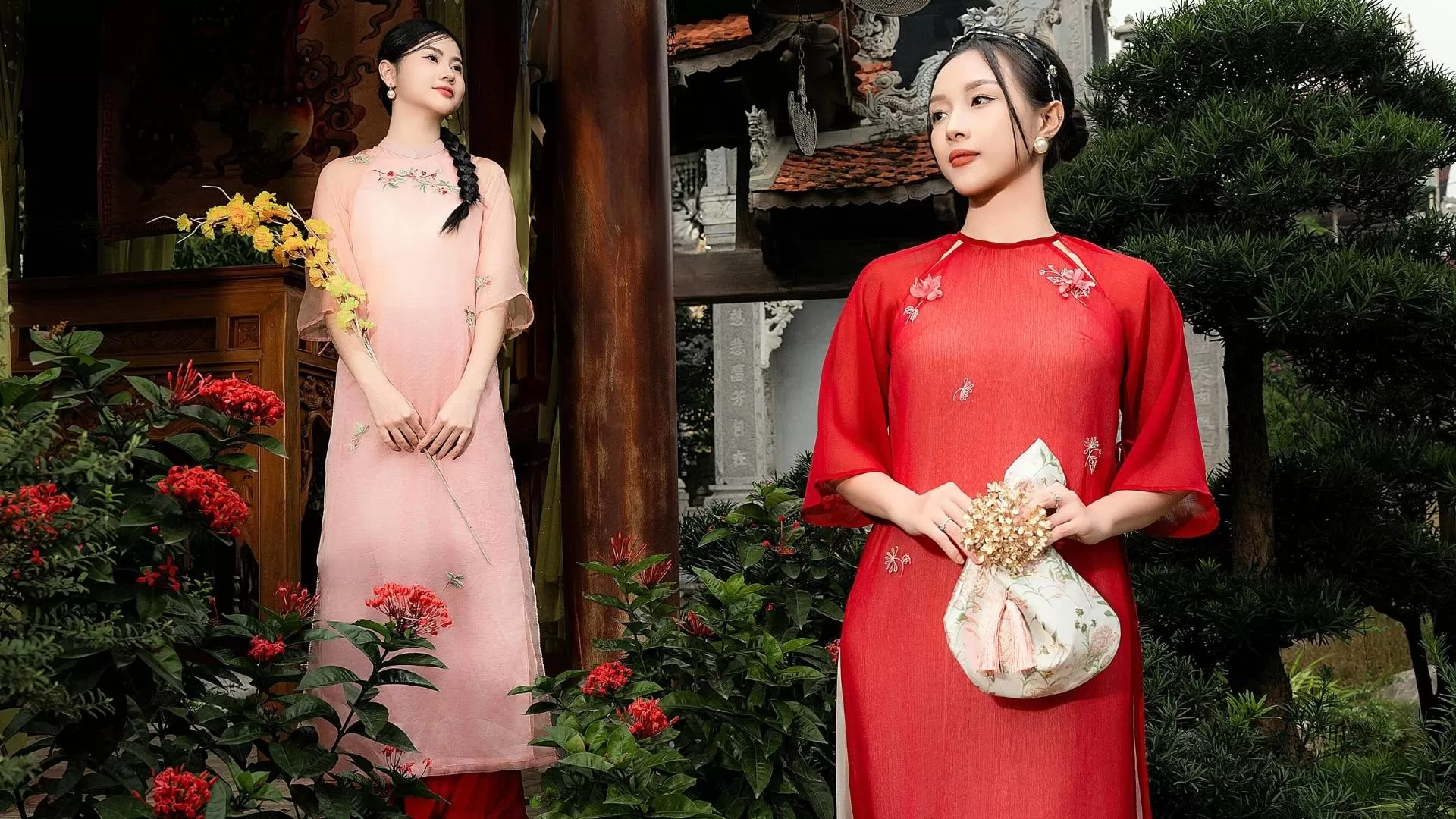
On the other hand, the modern Ao Dai includes variations such as shorter sleeves, asymmetric cuts, or sheer overlays. Designers frequently use lace, organza, or synthetic fabrics to create fashion-forward designs for pageants, performances, and contemporary weddings. The modern Ao Dai blends Western aesthetics with traditional elegance, offering a fresh take on this beloved costume.
Ao Dai Vietnam: The beauty of fabric, color and decoration
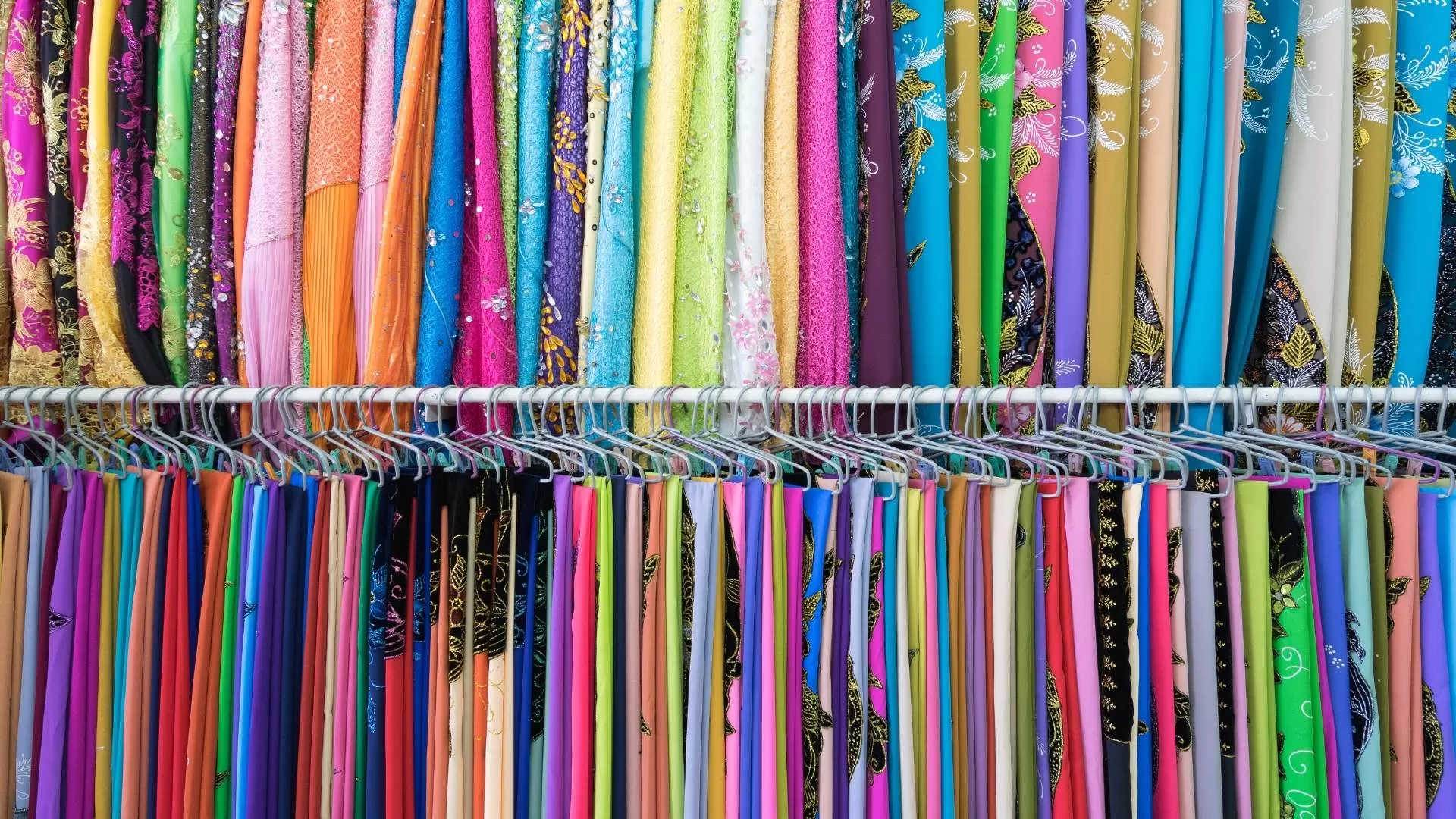
The beauty of the Ao Dai lies in its graceful lines, but just as important are the elements of fabric, color, and decoration, which together create a garment rich in symbolism and style.
Fabrics
Ao Dai are tailored from a variety of materials, each chosen for its function and aesthetic:
Silk: Soft, smooth, and flowing, silk is the most iconic fabric used for Ao Dai. It drapes beautifully and is favored for weddings, formal events, and photoshoots.
Brocade: This thick, patterned fabric adds a regal touch, making it ideal for ceremonial wear and traditional weddings.
Lace and chiffon: These lighter, semi-transparent materials lend a modern and romantic flair, especially in contemporary Ao Dai designs.
Cotton blends: More breathable and casual, cotton is often used for school uniforms or everyday wear, especially in warmer regions.
Colors
In Vietnamese culture, color holds deep meaning, and the Ao Dai reflects this symbolism:
White: Symbolizing purity, innocence, and simplicity, white Ao Dai are traditionally worn by schoolgirls.
Red: Associated with luck, happiness, and prosperity, red is commonly seen in weddings and festive occasions like Tet.
Gold and yellow: Historically linked to royalty and success, these colors are worn in celebrations and important ceremonies.
Pastels: Soft shades such as lavender, pink, or baby blue convey youthfulness, femininity, and grace.
Black and deep blue: More solemn and formal, these hues are often worn by older women or in respectful, traditional settings.
Decorative elements
Beyond fabric and color, Ao Dai are often adorned with artistic details that elevate their beauty:
Hand embroidery: Delicate images of bamboo, lotus flowers, birds, and traditional landscapes are stitched into the fabric.
Beading and sequins: Pearls and beads are used to add shimmer and elegance to formal Ao Dai.
Printed or painted motifs: Scenes of nature, pagodas, and folklore stories are printed or hand-painted directly onto the dress, transforming it into a wearable canvas of Vietnamese heritage.
Together, these design choices make each Ao Dai not only a piece of clothing but a unique expression of Vietnamese identity and aesthetics.
When and where the Ao Dai is worn today
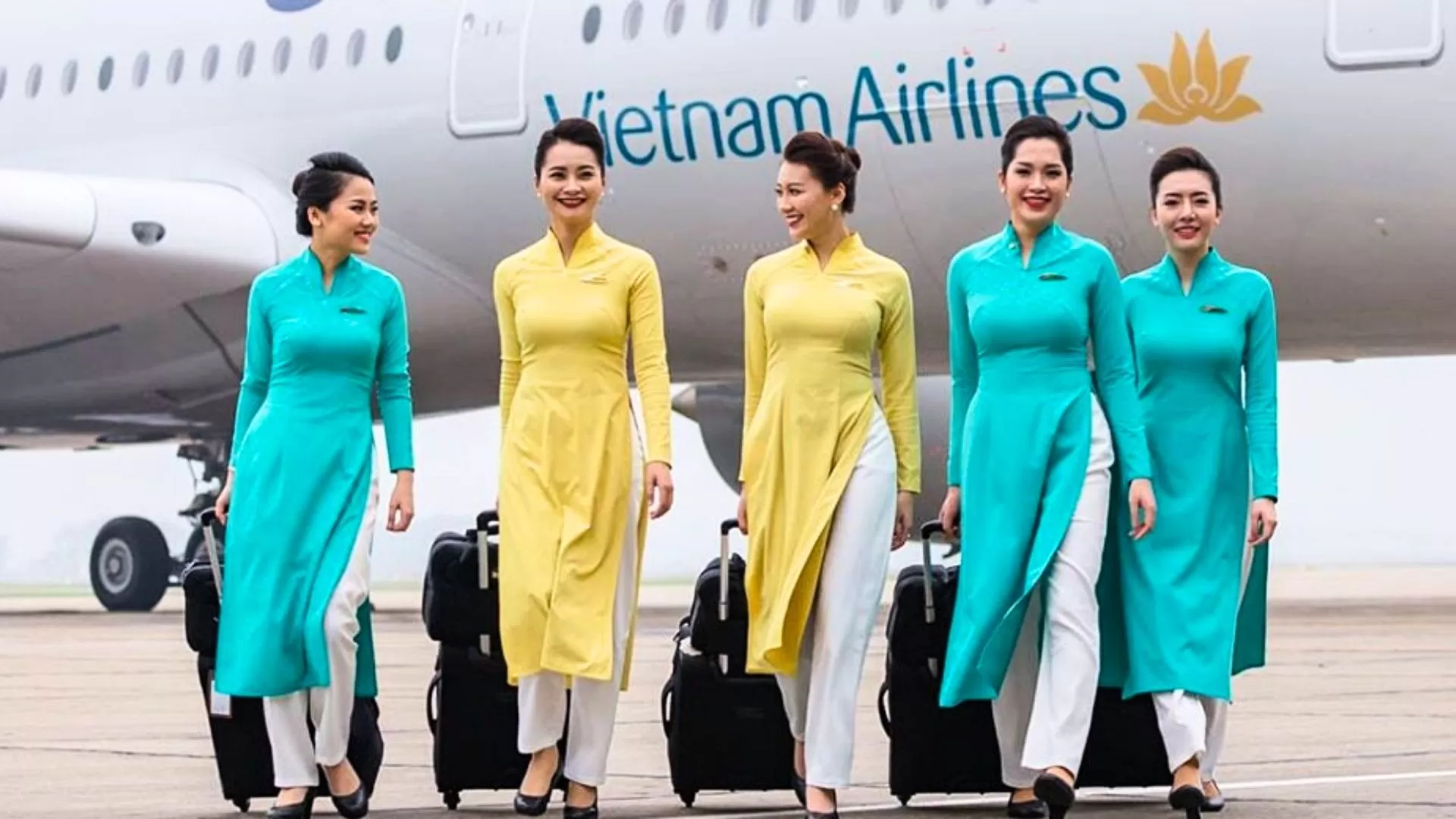
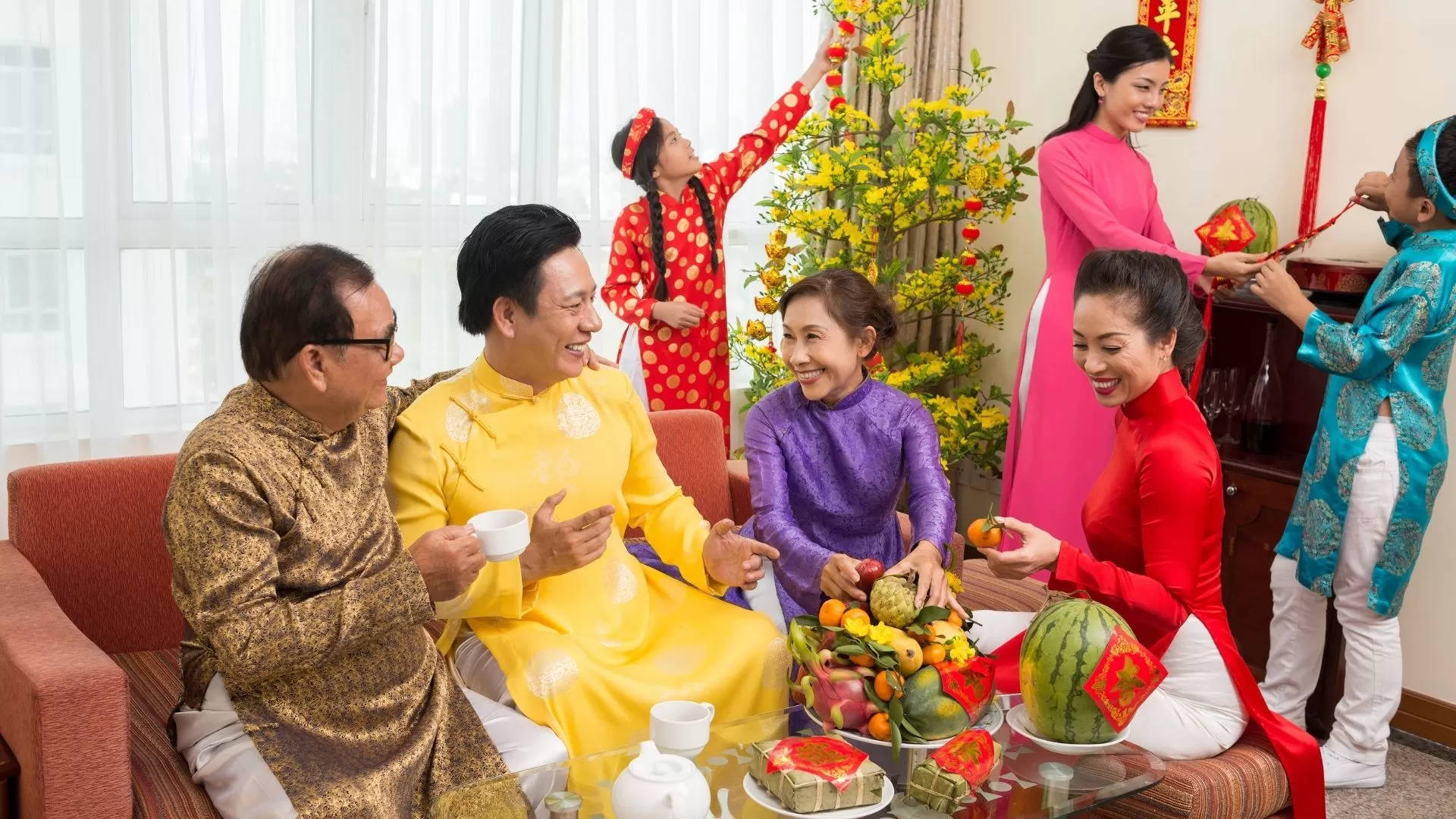
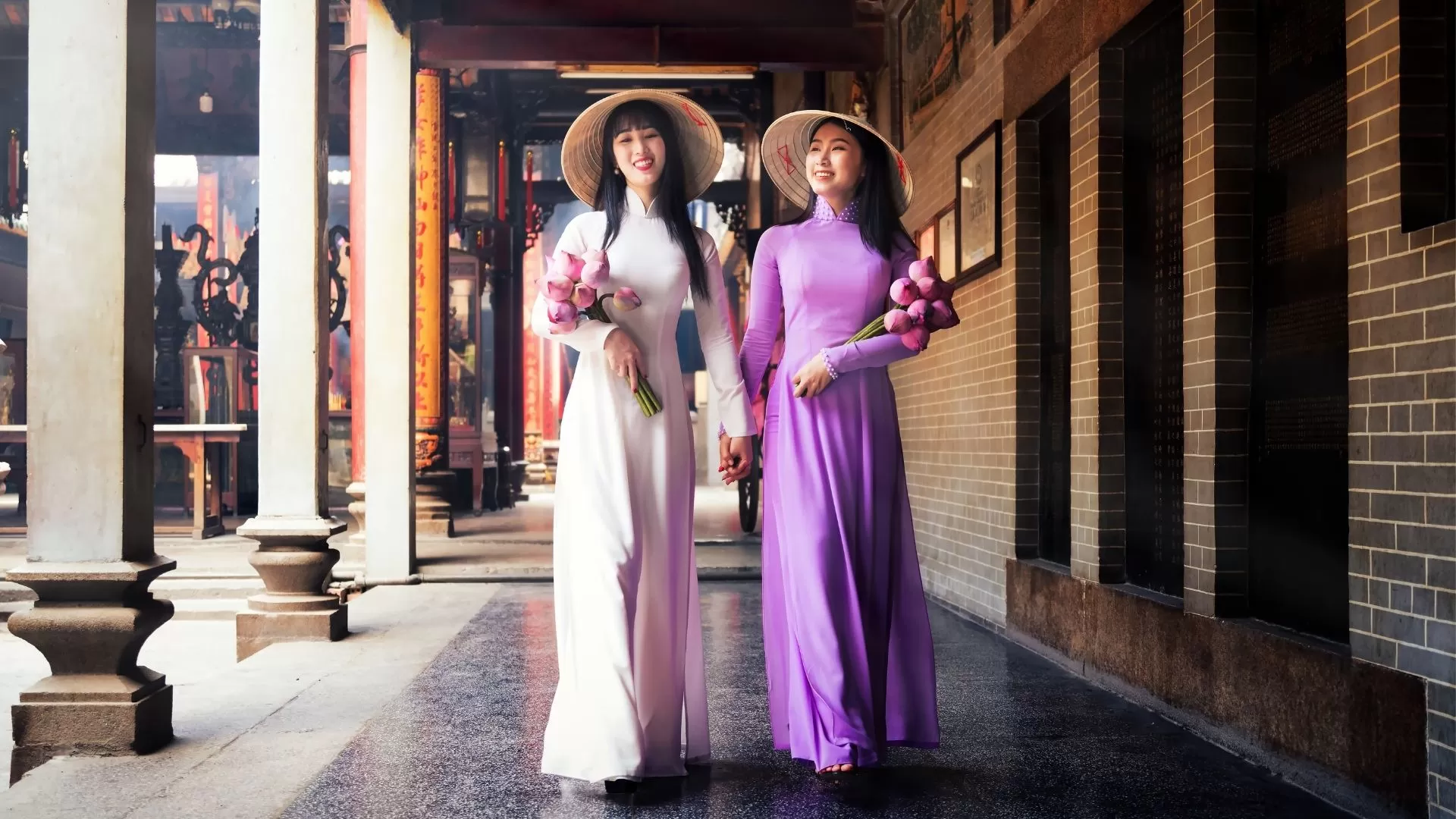
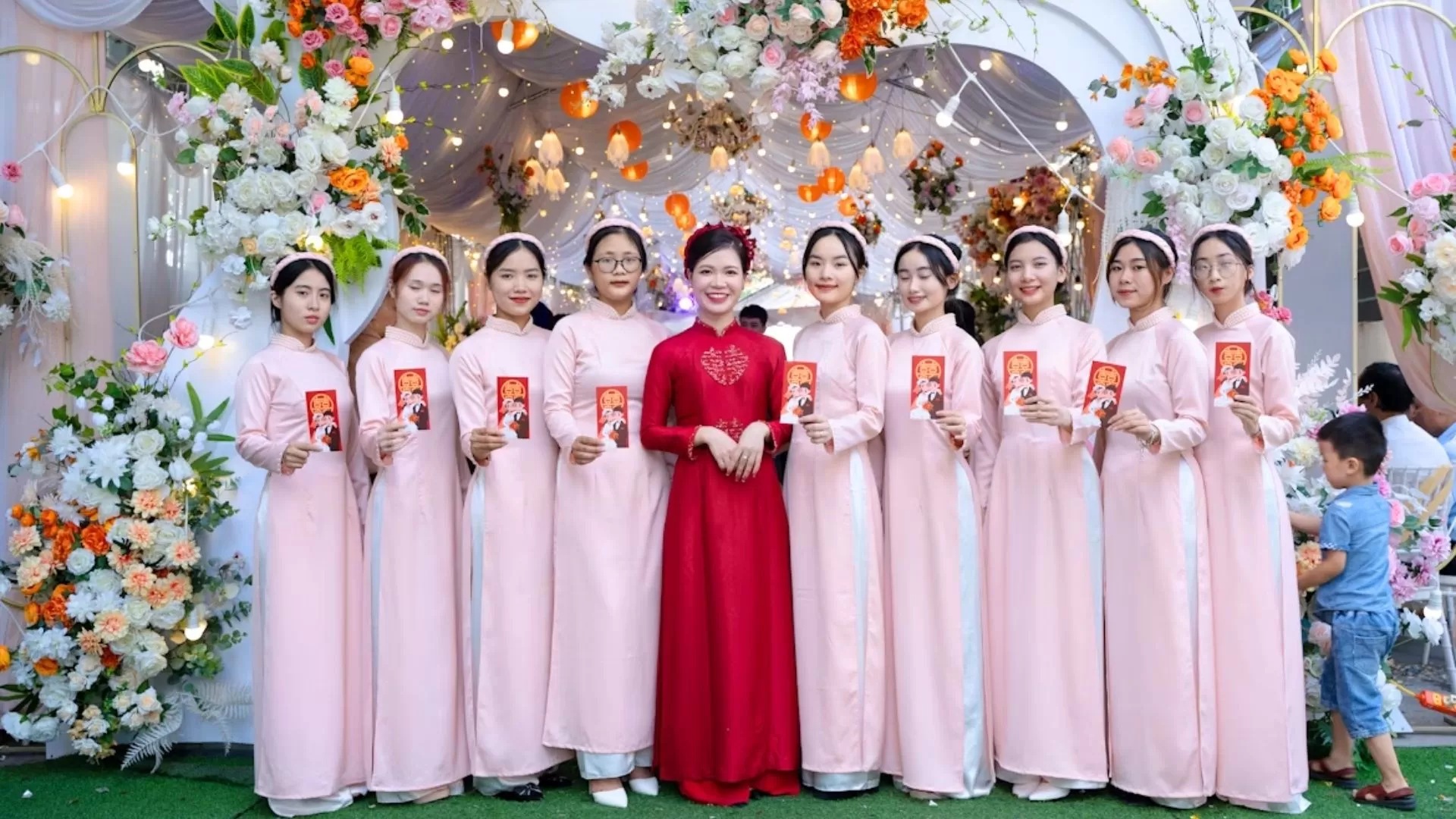
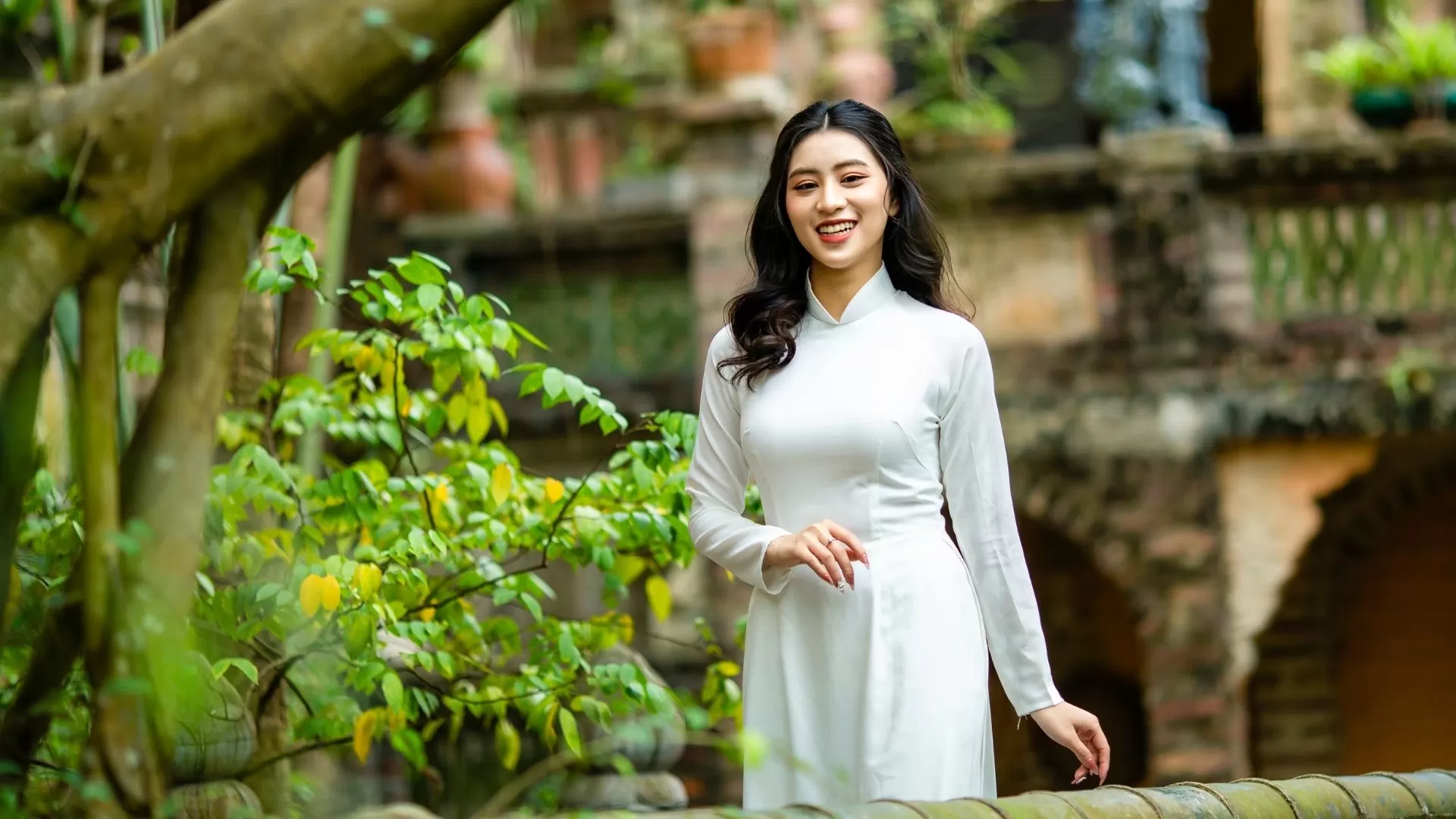
If you're planning to plan a trip to Vietnam, don't miss the opportunity to see or wear the Ao Dai in its cultural context. Although the Ao Dai has ancient origins, it remains an important part of modern Vietnamese culture. Its elegance and cultural depth make it a popular choice for many occasions:
School uniforms: In many cities, high school girls wear white Ao Dai as their daily uniform—a symbol of youth, discipline, and purity.
Weddings: The Ao Dai is a staple in Vietnamese weddings. Brides often wear ornate red Ao Dai with intricate embroidery, while grooms don matching styles to complement the ceremony.
Tet celebrations: During Vietnam’s Lunar New Year, families dress in colorful Ao Dai for visiting relatives, attending temple rituals, and taking family portraits.
Cultural performances: Whether in traditional dances or musical shows, performers frequently wear custom-designed Ao Dai that reflect the artistic themes of the event.
Corporate branding: Several Vietnamese airlines, luxury hotels, and service providers use the Ao Dai as part of their staff uniforms to evoke elegance and national pride.
Tourist experiences: Travelers to Vietnam can rent or buy Ao Dai for photography sessions in scenic locations like Hanoi’s Old Quarter, the ancient capital of Hue, or lantern-lit Hoi An.
The Ao Dai is more than just attire—it’s a living tradition woven into both everyday and ceremonial life in Vietnam.
Where to get a tailor-made Ao Dai in Vietnam
For travelers seeking a truly authentic experience with Vietnam's traditional costume, having an Ao Dai custom-tailored is one of the most memorable ways to engage with local culture. From bustling cities to historic towns, Vietnam offers a range of tailor shops that specialize in the elegant traditional Vietnamese dress.
Hanoi
Ao Dai Thu Lieu -📍270 Cau Giay Street, Dich Vong Ward, Cau Giay District, Hanoi
Ao Dai Ha Cuc -📍No.8 Pho Hue Street, Hoan Kiem District, Hanoi
Ao Dai Thanh Hai -📍179 Ngo Gia Tu Street, Long Bien District, Hanoi
Hoi An
Bebe Tailor -📍05–07 Hoang Dieu Street, Hoi An Ancient Town
Yaly Couture -📍 358 Nguyen Duy Hieu Street, Hoi An
A Dong Silk -📍62 Tran Hung Dao Street, Hoi An
Ho Chi Minh City
Ao Dai Xeo Xo -📍43 Dang Thi Nhu Street, Nguyen Thai Binh Ward, District 1, Ho Chi Minh City
Ao Dai Thanh Ha -📍55/9 Van Kiep Street, Ward 3, Binh Thanh District, Ho Chi Minh City
ABC Ao Dai -📍19 Ly Chinh Thang Street, Vo Thi Sau Ward, District 3, Ho Chi Minh City
Q&A about Ao Dai Vietnam
Do I need a special occasion to wear an Ao Dai?
Not at all. While traditionally worn during weddings, Tet, and formal ceremonies, you can wear an Ao Dai anytime you want to experience Vietnamese culture—many tourists even wear it just for sightseeing or photoshoots.
Can men wear Ao Dai too?
Yes. Men's Ao Dai is typically looser, with simpler colors and patterns, and often worn during traditional events, weddings, or as ceremonial attire.
How long does it take to tailor an Ao Dai?
Most tailors can complete a custom Ao Dai in 1–3 days. Express service (24 hours) is often available in tourist cities like Hoi An and Hanoi.
What is the average cost of an Ao Dai?
A ready-made Ao Dai can cost between $20–$50. Custom-made Ao Dai range from $50 to $200 or more, depending on the fabric and embroidery.
Can I rent an Ao Dai for photography?
Yes. Many tailors and photo studios in cities like Hoi An, Hanoi, and Hue offer Ao Dai rental services with full styling and accessories included.
Dream about your trip to Asia, in private
We are here to make it happen with youFREE QUOTE, WITHOUT OBLIGATION

